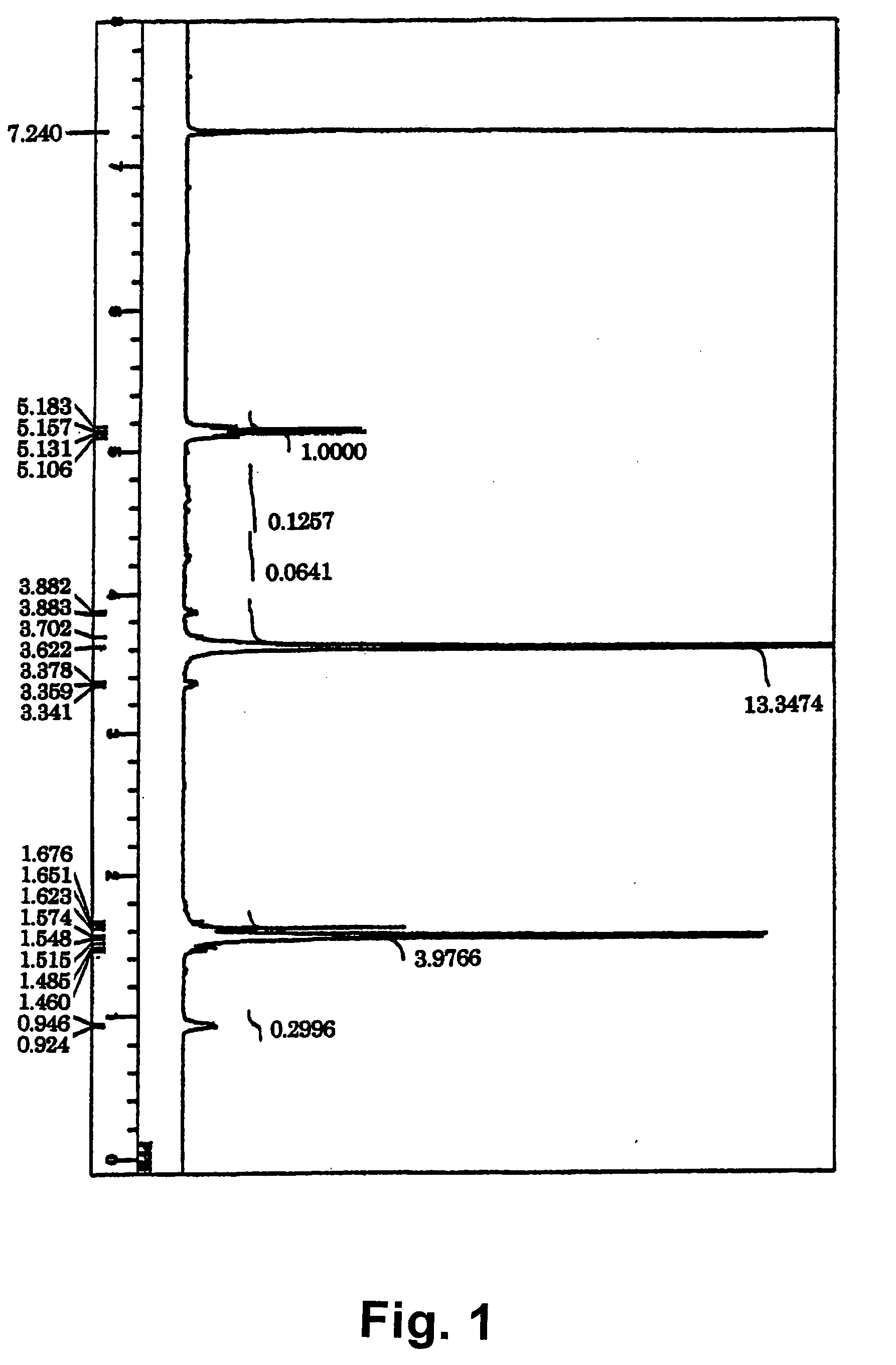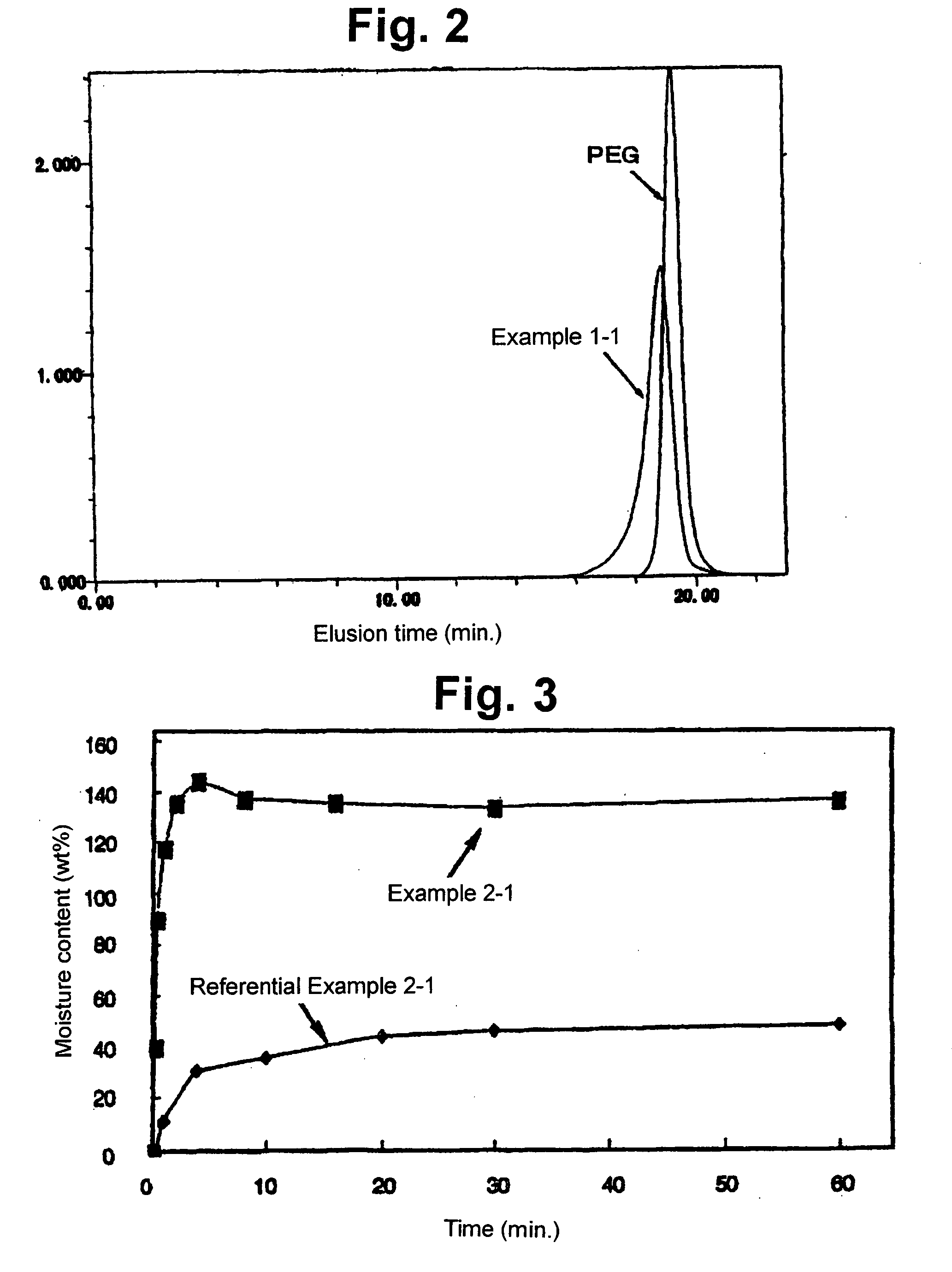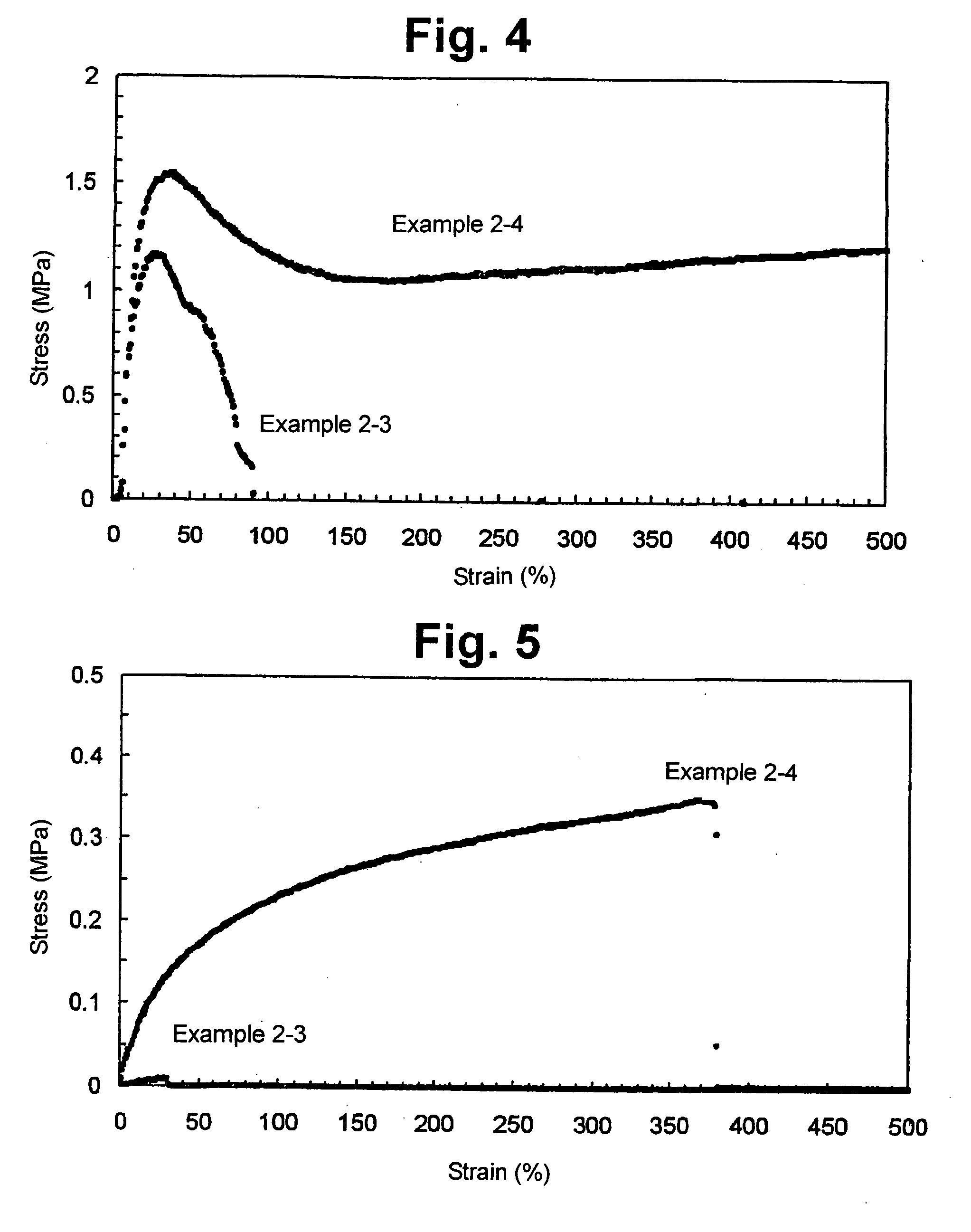Tertiary block copolymer, process for producing the same, and biocompatible material
a triblock copolymer and polymer technology, applied in the direction of prosthesis, powder delivery, pharmaceutical delivery mechanism, etc., can solve the problems of rigidity and water absorption, polylactide limits its application mainly to medical joints and screws, lack of flexibility and water absorption, etc., to achieve excellent flexibility and tissue anti-adhesion properties, and sufficient properties
- Summary
- Abstract
- Description
- Claims
- Application Information
AI Technical Summary
Benefits of technology
Problems solved by technology
Method used
Image
Examples
example 1-1
[0078] Under dry inert gas atmosphere, 1 g of previously lyophilized PEG having a hydroxyl group at each end and having a number average molecular weight of 11000, 0.580 g of L-lactide, and 0.076g of cyclo(glycolic acid-leucine) as depsipeptide were introduced into a reaction tube for polymerization, and 1.8 mg of tin(II) 2-ethylhexanoate dissolved in a small amount of THF was added. Degassing, substitution with inert gas, and degassing were repeated for three cycles. After complete removal of THF, the reaction was performed in a 150° C. oil bath for 2 minutes, and then in a 115° C. oil bath for 24 hours. The reaction product was dissolved in chloroform, and added dropwise into water-cooled diethyl ether to precipitate white solid. The solid was separated by suction filtration, dissolved in chloroform, crystallized repeatedly from diethyl ether, and dried under reduced pressure, to thereby obtain an A1-B-A2 triblock copolymer of a structure, poly[lactide-r-(glycolic acid-amino acid)...
example 1-2
[0083] An A1-B-A2 triblock copolymer was obtained in the same way as in Example 1-1, except that 1 g of PEG having a number average molecular weight of 20000 was used as the PEG, the amount of L-lactide was 0.285 g, and the amount of cyclo(glycolic acid-leucine) was 0.037 g. The obtained copolymer was subjected to the various measurements. The results are shown in Table 1.
example 1-3
[0084] An A1-B-A2 triblock copolymer was obtained in the same way as in Example 1-1, except that the amount of L-lactide was 0.435 g, and the amount of cyclo(glycolic acid-leucine) was 0.057 g. The obtained copolymer was subjected to the various measurements. The results are shown in Table 1.
PUM
| Property | Measurement | Unit |
|---|---|---|
| melting point | aaaaa | aaaaa |
| reaction temperature | aaaaa | aaaaa |
| reaction temperature | aaaaa | aaaaa |
Abstract
Description
Claims
Application Information
 Login to View More
Login to View More - R&D
- Intellectual Property
- Life Sciences
- Materials
- Tech Scout
- Unparalleled Data Quality
- Higher Quality Content
- 60% Fewer Hallucinations
Browse by: Latest US Patents, China's latest patents, Technical Efficacy Thesaurus, Application Domain, Technology Topic, Popular Technical Reports.
© 2025 PatSnap. All rights reserved.Legal|Privacy policy|Modern Slavery Act Transparency Statement|Sitemap|About US| Contact US: help@patsnap.com



